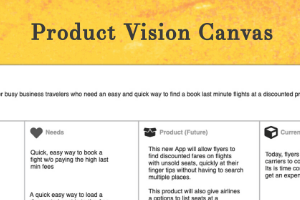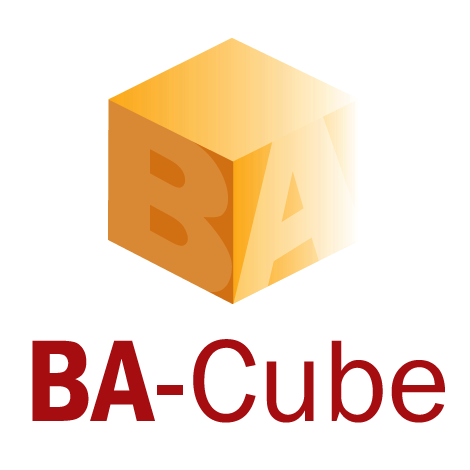Product Vision & Scope
Product Vision
A product is what a project, project team, or product teams creates, and a product is used by human users and serves various scenarios based on user (human user) actions. There are external facing products used by customers outside of the organization, and internal products used by internal users.
Some organizations also “productize” their systems and system components as “products”, but for the purpose of analysis, this definition of “product” does not work. These types of products sit in the middle of a user value chain, and do not provide value alone as a stand alone product. They are part of a group of components that create value for users, and that groups is what needs to be analyzed. So, even if you are assigned to a “technical product” that does not have end-users (human users) the analysis still needs to happen from the end-user point of view for the grouping of components that make up a product people use.
A Product Vision and Scope are key pieces to understanding the context of your work.
Many times BAs will ask if they should create one, and sometimes get a positive “yes” response, and others will say, “No, it’s been done, or let’s just talk about it.” Either way, I would go through the motions to create one, formally or as a practice to help you have the right conversations with the right people, learn the context, and start building the right relationships.
Most projects that claim to already have a Product Vision and Scope, may not have one defined like this course will teach you. So, be sure to go through this process, and call what you are doing something different if you need to avoid stepping on toes. Call it, “The Analysis Context”, “Situation Statement”, “User Vision Statement”, or any other thing that makes sense to you. The important part is to understand and get a shared understanding with the leaders, stakeholders, and team on what the vision and scope from a user impact point of view is.
The basic template for a Product Vision i:
This product is for____. Who need _____. This product will ___. Compared to today where ___.
Here is a video to start learning about how to Create a Product Vision:
To help track and facilitate conversation about the Product Vision you can also use a Product Vision Canvas, think of it like a visual note board that you can use yourself, or with others to make sure the conversation covers all the key pieces you will need to understand and get alignment on. Here is a video and temple for you on this:
Product Vision Canvas Template

Scoping
Once you have a product vision that is clear, you can create the product scope. This is different than the project scope, and sometimes the project scope does include the product scope. Sometimes it is documented before a BA joins that team, but it may or may not have the information that a BA needs from a scope perspective to start analysis work. You will need the product scope that outlines the user interaction scope point of view. Sometimes a product scope is already documented but is a list of technical outputs or tasks, and this will not help you. So, again, you may need to do some “playing with words” on this to not step on toes and get this scoping done when others think it already is completed. Not doing this step will create issues down the road in your analysis!
Here is a Scoping Checklist to get you started on scoping, and a video on creating a Scope Model (also called a Context Diagram) as well!
Scope Model & Context Diagram Video:
Since you product vision and scoping activities should be agnostic of the exact solution, next you can do a Options and Alternatives Analysis and facilitate the team through possible options to meet the scope at a high level. Here is a video to tell you more:
If all of this seems like a lot of work and there is no time for this due to pressure to “just get requirements done”, rest assured, you can so this quite quickly and while you are working on requirements. You will need this information to do requirements correctly and without it, your work will slow down dramatically!
